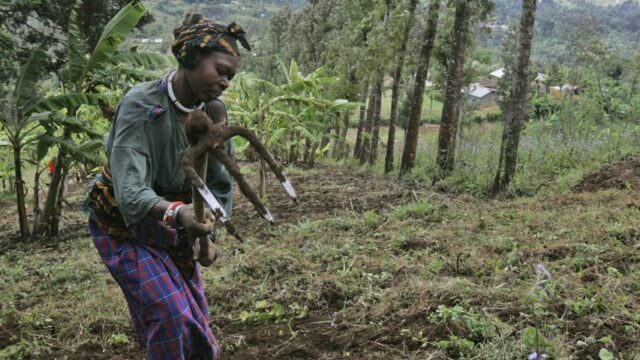
Poverty
The Department of State recognizes the importance of providing impoverished communities with tools to move from poverty to productivity. U.S. ambassadors and their embassies throughout Africa are joined by colleagues from the Department of Defense and USAID in working towards creating more microfinance options. This collective presence shows that the U.S. government is committed to this effort and will continue to aid nations around the world as they work to eradicate poverty.
Case Study: Microfinance
How do poor rural farmers get access to loans if banks either do not exist in their area or won’t lend to them? Ask a group of fifty farmers in Tanzania. In a packed and conversation-filled room in the northern part of the country, the wheels of microfinance are spinning quietly and efficiently.
Microloans are small loans given by independent institutions. Every week, this group of people who own and run small businesses come together in Arusha to make payments on their microloans. These small loans came from the Promotion of Rural Initiatives and Development Enterprises Limited (PRIDE), a Tanzanian microfinance institution. Each farmer also deposits earnings into a savings account to fulfill one of the requirements of the loans—that borrowers strengthen their financial position.
The U.S. Agency for International Development (USAID) has helped PRIDE maintain and increase its microloan program. PRIDE counts on good faith and social cohesion for repayment by making group loans that involve 50 people. Group members work out the specific allocation of funds themselves and are responsible individually and jointly for paying the loan back.
Related Links:
Bureau of Economic and Business Affairs